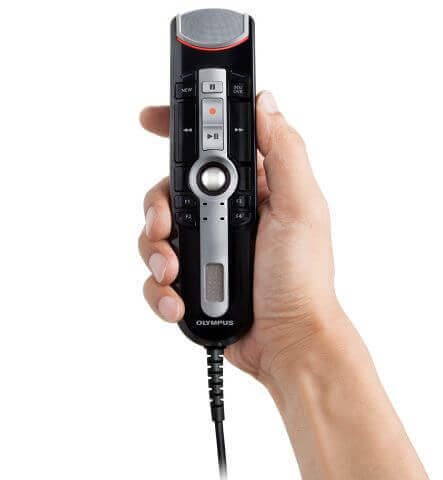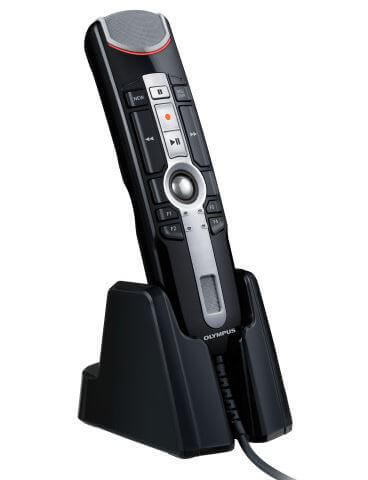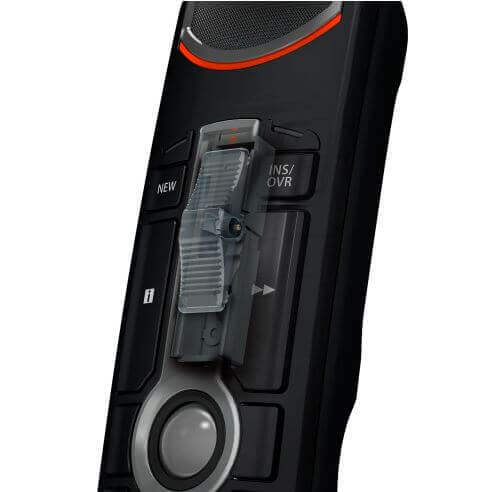Speech Recognition - Useful Things to Know

Sponsored article.
We find ourselves in a time, where we have to get used to some changes in regard to how we approach our work-life. This goes for everyone, including those that work from a home office, to those who work in retail and also those who work within health care. When it comes to work tools, there are already plenty of options out there that will help us accomplish our every-day tasks easier and more efficiently. This can be through ergonomic means, e.g. a correct sitting posture with the help of a proper desk or office chair, a good headset for hands-free phone calls and conference meetings or maybe a good dictation microphone, which is what we’ll be focusing on in this article.
When it comes to microphones as a tool for speech recognition and dictation, there are several things that you have to know about, and keep in mind. You might never have considered the use of dictation devices in your work-life, but they might just be the key to radically changing your work-life into a more efficient and pleasant one.
1. Is the microphones frequency response optimal for speech recognition?
Microphones come in all sizes and shapes and they can be optimized for different frequency response ranges too, depending on what use they are intended for. When it comes to speech recognition, i.e. where the microphone’s primary purpose is to focus on standard speech, it is key that the frequency response is primed towards this. The most important frequencies in regular speech lie between 250 and 8,000 Hz. Many headsets and microphones on the market actually cover an even larger frequency range, and are therefore susceptible to more sounds.
An Olympus RecMic II has a frequency response between 200 Hz and 9 kHz, and this makes it a microphone that is particularly suitable for regular speech.
2. Active noise-cancellation
Professional speech recognition devices make use of a secondary microphone in order to analyze and identify external noise. In conjunction with the directional microphone that focuses on the voice, all external sounds are identified and subsequently filtered out without affecting the recorded voice. This is a crucial feature since much of the recording that is done will be taken on the fly, and more often that not in noisy surroundings. This could be a populated office environment, but could also be natural sounds in your home office or, if you’re a medical professional, noises from a busy hospital aisle. As such, a good device will offer you precise directionality that will improve the quality of the voice recording and at the same time reduce the unwanted sounds from surrounding sources.
3. Dedicated button to start and stop recording
An obvious, but still very important, feature is a dedicated button to start and stop recording. It has to be easy and quick to command your dictation device. If you cannot, with ease, reach this function then you might end up in a situation where you’ve recorded a lot of unwanted sequences that you’ll be forced to edit out later. A dedicated button will also provide you with a nice feedback so that you can rest assured that the device is recording when, and only when, you want it to.

Image: Olympus RM-4010P RecMic II
4. Configurable buttons for voice commands and shortcuts
With most dictation devices, it is possible to control it via voice commands, even whilst you are recording your voice. However, it is still much faster to have easy access to certain functions via pre-configured shortcuts. As such, it will be an advantage, if the device features buttons that can be configured to suit your needs. You might already know about macros and dedicated macro keys on your keyboard. If your dictation device has configurable buttons you’ll be able to, in a similar fashion, make your workflow easier and more efficient by using these.

Image: RM-4010P RecMic II - Source: Globesystems
As an example, Olympus’s RecMic Configration Tool software can assign keyboard shortcuts to one of the buttons on the RecMic II.

Image: Olympus RM-4110S RecMic II - Source: Globesystems
5. Hygiene
Last, but not least, it is very important that the device allows for a high degree of cleaning and sanitization. It might be the case that the device is to be used by more than one individual, and maybe even by a medical professional. Therefore, it is crucial that the device can be cleaned thoroughly without one having to be concerned with damaging the electrical parts. So, be sure to do look for information on this when reading up on the device that you are considering. As an example, the RecMic II from Olympus makes use of the Polygiene technology, which in short means that the product is protected by an antimicrobial coating that will protect it from microbes, bacteria and fungi. At the same time, this coating is resistant to being wiped with disinfecting solutions such as ethanol and isopropanol.
Latest smart home
-
24 Sepsmart home
-
19 Augspeaker
Ultimate Ears Everboom
-
16 Augsmart home
Apple's smart home robot could cost $1,000
-
29 Julsmart home
Arlo Essential indoor camera 2K
-
05 Julsmart home
Apple code suggests new Smart Home device
-
29 Junspeaker
Anker Soundcore 2
-
17 Junsmart home
Get your Smart Light updated with Wiz
-
03 Junspeaker
Tribit StormBox Flow
Most read smart home
Latest smart home
-
24 Sepsmart home
Google TV Streamer 4K
-
19 Augspeaker
Ultimate Ears Everboom
-
16 Augsmart home
Apple's smart home robot could cost $1,000
-
29 Julsmart home
Arlo Essential indoor camera 2K
-
05 Julsmart home
Apple code suggests new Smart Home device
-
29 Junspeaker
Anker Soundcore 2
-
17 Junsmart home
Get your Smart Light updated with Wiz
-
03 Junspeaker
Tribit StormBox Flow






